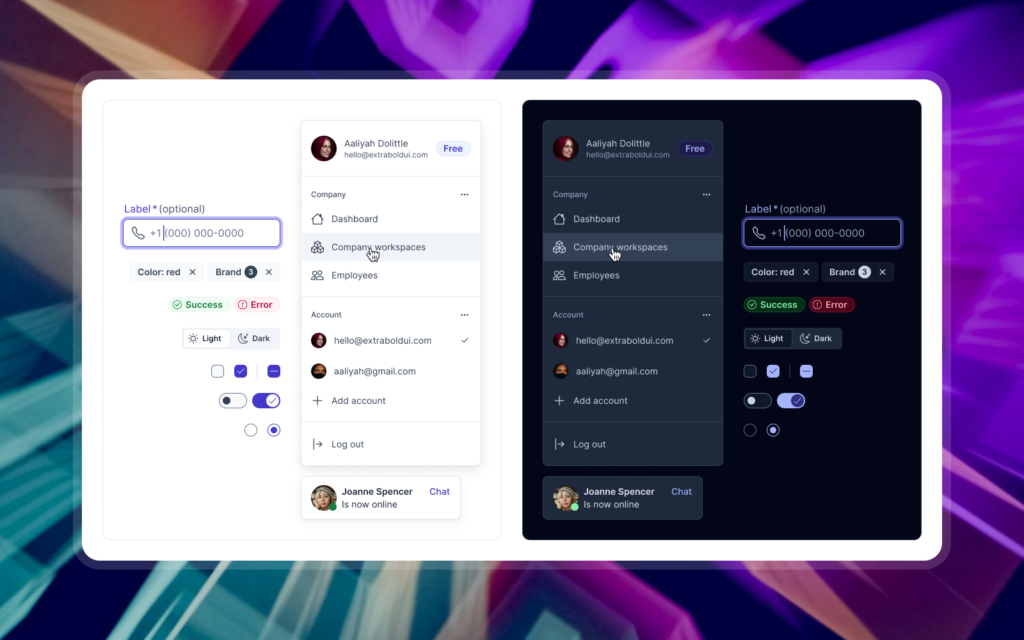Design system kits give designers ready components, styles, and rules so work moves faster and stays consistent. Spend a little time learning the kit up front and it will repay that time many times over.
1. Learn the kit before you start
Open the main file. Scan components, tokens, and master styles. That short investment reduces guesswork later and keeps decisions steady.
2. Use the pre-built components
Drop in buttons, cards, forms, and navigation instead of rebuilding them. Components are designed to be adaptable and save repeated effort.
3. Rely on design tokens for consistency
Use the tokens for color, type, spacing, and elevation. Changing a token updates every instance, so branding swaps and theme tweaks are quick.
4. Keep your file tidy
Group frames, name layers clearly, and organise pages. A clean file makes it easier to find patterns and reuse elements without hunting.
5. Make conservative customisations
Adjust what you must. Excessive changes fragment the system and make future updates harder to apply.
6. Link to master libraries
Connect to the kit’s library so your project pulls the latest components and styles. That avoids manual syncs and hidden mismatches.
7. Use plugins to automate chores
Plugins for tokens, instance management, and component audits save time on repetitive fixes. Add them to your routine for faster checks and cleaner files.
8. Bring developers in early
Share components and intentions with developers while designs are forming. Early alignment reduces rework and speeds up implementation.
9. Note and document your changes
If a component needs a tweak, record what changed and why. Clear notes keep teammates on the same page and make handoffs smoother.
10. Check for updates regularly
Kits evolve. Periodically review release notes or the source file for new components and fixes that can save time on future work.
Using a design system kit is about working smarter. Apply these habits and the kit will speed delivery, reduce friction, and keep interfaces reliable.

